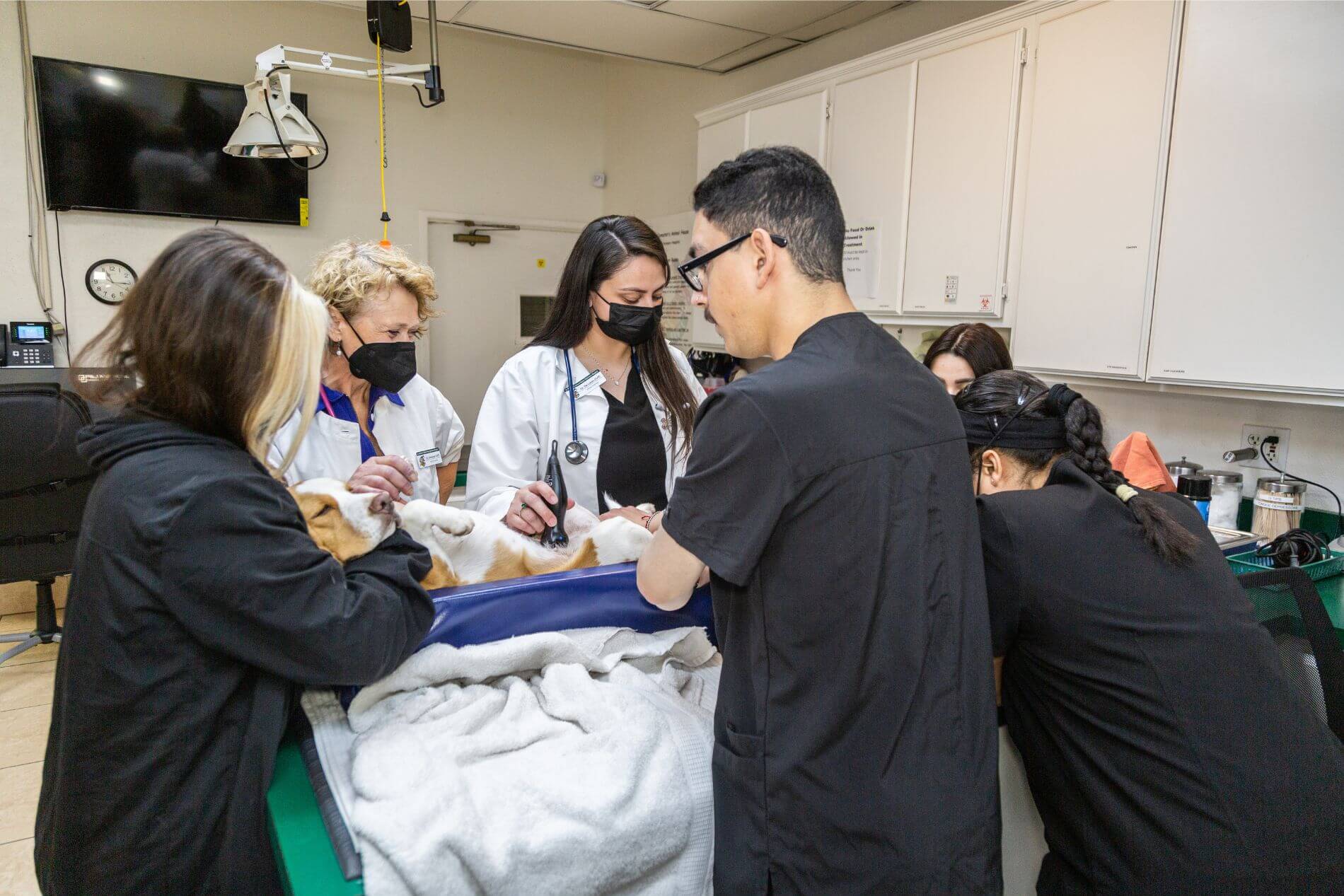
Pet Ultrasound Examination
Our pet ultrasonography includes an array of ultrasounds, including abdominal ultrasound for cats and dogs.
Call us today at 📞 626-303-7881
Pet ultrasound is a diagnostic imaging tool frequently used in veterinary medicine.
An ultrasound is a non-invasive procedure that uses high-frequency sound waves to produce images of the body’s internal organs. Soft tissue organs like the liver, spleen, kidneys, and reproductive organs can all be examined using ultrasound.
A pet ultrasound is performed by a trained veterinarian who first applies a small amount of gel to the skin before sending sound waves into the body with a tiny wand known as a transducer. After receiving information from the transducer, the computer then generates images based on the echoes, which also collects the sound waves’ echoes. Tumors, cysts, and organ abnormalities can all be detected using these images, along with several other conditions and diseases.
Pet ultrasounds do not use radiation and can be carried out in the vet’s office; the diagnostic is relatively quick and painless. It is crucial to select a licensed and experienced veterinary professional for your pet’s ultrasound needs because ultrasound depends on the skill and experience of the technician performing the procedure.
Jan Bryson
Pet Ultrasound Diagnostics FAQS
An ultrasound machine emits high-frequency sound waves that penetrate through a pet’s body and bounce back when they encounter different tissues. The image displayed on a computer screen is then created from the returning sound waves.
Both pet ultrasounds and radiographs (X-rays) are diagnostic imaging techniques veterinarians use to assess and identify various medical conditions. The two approaches have significant differences, but they both provide helpful information about an animal's health.
How they work: Pet ultrasound uses high-frequency sound waves to produce images of the body's internal structures, while radiographs use X-rays to create images of the body's bones and other structures.
The information they provide: Radiographs are better at imaging bones and the lungs, while ultrasound is better at imaging soft tissues like the liver, kidneys, and reproductive organs.
Preparation required: For an ultrasound, the area to be examined may need to be shaved or hair removed; for radiographs, the animal must remain motionless for a brief period.
Safety considerations: Ultrasound is considered safe and non-invasive. X-rays are also non-invasive and use ionizing radiation, which can be harmful in high doses.
Cost: Pet ultrasounds generally cost more than radiographs, though the price can vary depending on the procedure.
Dogs and cats may require ultrasounds for a number of medical conditions, such as:
- Abdominal pain or swelling
- Changes in urination or defecation
- Breathing difficulties
- Reproductive health
- Monitoring treatment progress
- Biopsy guidance
No, ultrasound is a non-invasive, painless procedure that poses no risk to your beloved pet.
The length of a pet ultrasound procedure can vary depending on the particular reason for the procedure, the animal's size and temperament, and the parts of the body being imaged. Pet ultrasound procedures usually take 30 to 60 minutes to complete in total.
Yes, hair must be removed from the animal's body part before the ultrasound examination. This not only improves the ultrasound machine's capacity to produce sharp images, but it also makes it easier for ultrasound waves to travel through the body.
Before a pet ultrasound, it's generally advised to fast for at least 8 to 12 hours, especially if the abdomen is being checked. This is because gas can be produced by food in the stomach and intestines, which affects the ultrasound machine's ability to produce clear images.
The fasting period might not be required if the area being examined is not the abdomen or your veterinarian has given you specific instructions.
To ensure the best possible ultrasound results, it is always best to follow the precise instructions given by your veterinarian regarding fasting and any other pre-procedure preparations.
There are a few things that you can do to prepare your pet for an ultrasound:
Follow fasting instructions: As mentioned above, your vet will probably advise you to stop feeding your pet 8–12 hours before the abdominal ultrasound if your pet is scheduled for one. This is done to ensure the stomach and intestines are empty and won't affect the image quality. Make sure to follow these directions carefully.
Provide water: While food should be withheld, make sure your pet has access to plenty of fresh water. It will be easier to get clear images if they are hydrated.
Allow for relaxation: Keep your pet calm and relaxed before the procedure. This may mean minimizing activity or excitement leading up to the appointment.
Discuss medications with your veterinarian: It is important to discuss any medications your pet is taking before the appointment because some medications can interfere with the ultrasound procedure.
Bring any relevant medical records: Bring any pertinent medical records to the appointment if your pet has undergone prior diagnostic tests or procedures connected to the condition being assessed with ultrasound.
By following these guidelines, you can help ensure that your pet is well-prepared for its ultrasound procedure and that the best possible diagnostic images are obtained.
The cost of a pet ultrasound can vary depending on what part of the body needs an ultrasound and how extensive the diagnostics needs to be.
Get Care
© 2025 Dr. Domotor's Animal House | Privacy Policy



